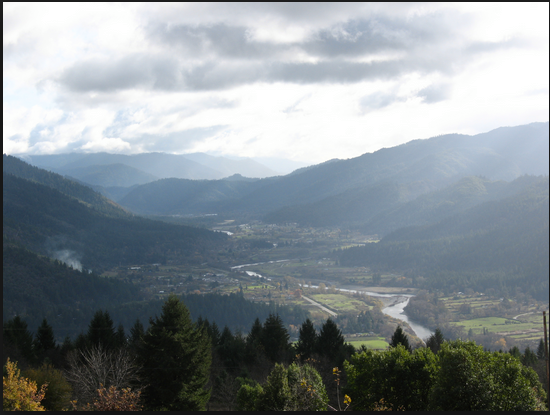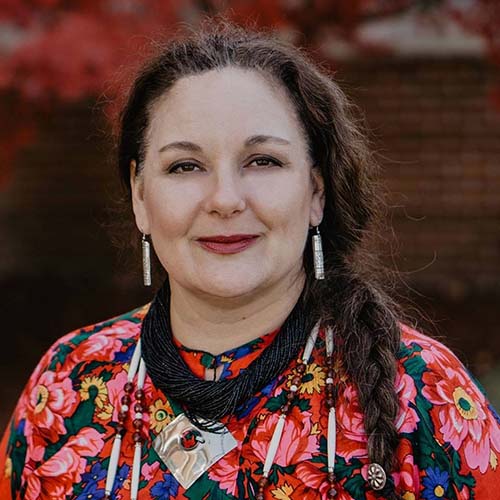
- Details
- By Nanette Kelley
HOOPA, Calif. — With COVID-19 cases on the rise, the Hoopa Valley Tribe is working to flatten the curve.
The tribe has reported 46 positive COVID-19 cases as of Aug. 24, which is nearly double their case count at the beginning of the month.
The tribe previously reported 24 cases on Aug. 6, an outbreak which helped elevate the entire county to its highest daily COVID-19 case record. Seven cases are currently active, with no deaths.
The reservation is currently closed, with a stay-at-home order in place for residents. Only essential businesses are allowed to be open.
The Hoopa Valley Tribe reservation sits in one of the most scenic valleys of Humboldt County, and is situated along the southern border of the Yurok reservation and includes parts of the Trinity and Klamath Rivers.
The tribe, which has a population of about 3,500, has reported 46 COVID-19 cases since the start of the outbreak, but that number also includes individuals who may live in the surrounding area.
“The media has pegged us as a Hoopa outbreak, but this is a community outbreak,” said Deputy Incident Commander Wendy Ferris-George (Hupa, Karuk).
Positive cases may have come from anywhere. Some patients may have homes elsewhere and brought it in from another area, as not all residents of the Hoopa Valley Reservation are tribal citizens. “We have a whole part of the Yurok reservation in the Hoopa zip code,” said Operations Section Chief Allie Hostler (Hupa/Yurok).
The Hoopa Valley Reservation is a small, isolated rural community that is underresourced and struggles to retain doctors.
“We’ve requested a full incident commander come in from FEMA and an epidemiologist from the CDC will be coming in a week,” said Hostler.
“We can’t completely close down the reservation, we don’t have the resources,” Hostler added, noting that the tribe has both a short-term and long-term plan of action.
In the short term, the reservation will stay closed with a stay-at-home order in place. A food service is being offered to those in quarantine or isolation, and the tribe’s hotel is being used for those who don’t have the space to isolate. Moreover, supplies like masks, PPE, bleach and sanitizers are being distributed to all tribal members, and contact tracing efforts continue.
“It’s hard to predict what numbers will show,” Hostler said.
The long-term plan involves the inventory of all food and supplies on the reservation in order to create a large-scale food plan, which will require them to determine how much food needs to be stories and what refrigeration is needed.
“We can’t take donations because we don’t have the resources to clean them,” Hostler said, adding that the community uses separate dumpster sites for the trash of residents who are isolating due to COVID-19.
Hostler stressed concern for all elders on the reservation. “We have a couple of programs that provide services for our elders, but we want to provide more,” she said. Hostler added that the K’ima:w Medical Center delivers hot meals to elders every day and offers an outreach nurse.
As the tribe implements their plans with limited human resources, they see an urgent need for more federal collaboration.
“Policies need to be put into place between the tribe and the federal government,” Ferris-George said.
For now, both Hostler and Ferris-George are focusing on the needs of their community, which they said is doing a good job of following orders and staying safe while putting some aspects of their culture on hold.
“It’s really hard on our people because we are outdoor people. Our religion is centered around the Hoopa community, and water and the river and our ceremonies,” Ferris-George said. “In small communities you don’t have visitors for the first time, it’s because they care about you.”
More Stories Like This
Native News Weekly (August 25, 2024): D.C. BriefsUS Presidents in Their Own Words Concerning American Indians
Navajo Mother Welcomes Federal Charges in 2020 Killing of Her Son
Native News Online Launches Year-End Campaign to Support ‘Warrior Journalism’
Native News Online’s Year-End Live Stream - Recap of 2025: A Night That Brings Indian Country Together
Help us tell the stories that could save Native languages and food traditions
At a critical moment for Indian Country, Native News Online is embarking on our most ambitious reporting project yet: "Cultivating Culture," a three-year investigation into two forces shaping Native community survival—food sovereignty and language revitalization.
The devastating impact of COVID-19 accelerated the loss of Native elders and with them, irreplaceable cultural knowledge. Yet across tribal communities, innovative leaders are fighting back, reclaiming traditional food systems and breathing new life into Native languages. These aren't just cultural preservation efforts—they're powerful pathways to community health, healing, and resilience.
Our dedicated reporting team will spend three years documenting these stories through on-the-ground reporting in 18 tribal communities, producing over 200 in-depth stories, 18 podcast episodes, and multimedia content that amplifies Indigenous voices. We'll show policymakers, funders, and allies how cultural restoration directly impacts physical and mental wellness while celebrating successful models of sovereignty and self-determination.
This isn't corporate media parachuting into Indian Country for a quick story. This is sustained, relationship-based journalism by Native reporters who understand these communities. It's "Warrior Journalism"—fearless reporting that serves the 5.5 million readers who depend on us for news that mainstream media often ignores.
We need your help right now. While we've secured partial funding, we're still $450,000 short of our three-year budget. Our immediate goal is $25,000 this month to keep this critical work moving forward—funding reporter salaries, travel to remote communities, photography, and the deep reporting these stories deserve.
Every dollar directly supports Indigenous journalists telling Indigenous stories. Whether it's $5 or $50, your contribution ensures these vital narratives of resilience, innovation, and hope don't disappear into silence.
 The stakes couldn't be higher. Native languages are being lost at an alarming rate. Food insecurity plagues many tribal communities. But solutions are emerging, and these stories need to be told.
The stakes couldn't be higher. Native languages are being lost at an alarming rate. Food insecurity plagues many tribal communities. But solutions are emerging, and these stories need to be told.
Support independent Native journalism. Fund the stories that matter.
Levi Rickert (Potawatomi), Editor & Publisher

